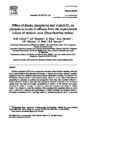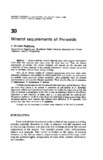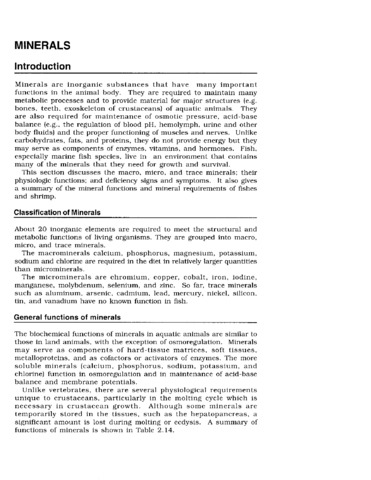Effect of dietary phosphorus and vitamin D3 on phosphorus levels in effluent from the experimental culture of rainbow trout (Oncorhynchus mykiss)
Share
Abstract
Excessive phosphorus (P) levels in aquaculture effluents violate federally mandated limits and pose a serious threat to the freshwater environment. In rainbow trout culture, effluent P probably originates as fecal and metabolic waste product because assimilation of dietary P is relatively low. We therefore decreased dietary P and increased dietary vitamin D3 levels, methods that enhance P assimilation in mammals, in purified and semi-purified trout diets, then monitored effluent P. Soluble effluent P reached a peak right after feeding and returned to baseline levels in between feeding times. The peak and average concentrations of soluble P in the effluent were mainly influenced by dietary P. Average P in fecal dry matter also decreased with dietary P. Neither dietary P nor vitamin D3 under the conditions of the experiment had significant effects on whole body P content but P deposition (as a percentage of P intake) decreased with increased dietary P. The dietary combination of low P and high vitamin D3 decreased soluble and fecal P levels in the effluent indicating a strategy whereby effluent P concentrations can be reduced by regulation of P metabolism.
Suggested Citation
Coloso, R. M., Basantes, S. P., King, K., Hendrix, M. A., Fletcher, J. W., Weis, P., & Ferraris, R. P. (2001). Effect of dietary phosphorus and vitamin D3 on phosphorus levels in effluent from the experimental culture of rainbow trout (Oncorhynchus mykiss). Aquaculture , 202(1-2), 145-161. https://doi.org/10.1016/S0044-8486(01)00572-5
Subject
Collections
- AQD Journal Articles [1249]
Related items
Showing items related by title, author, creator and subject.
-
Growth responses of Spirulina platensis to some physico-chemical factors and the kinetics of phosphorus utilization
Baldia, Susana F.; Fukami, Kimio; Nishijima, Toshitaka; Hata, Yoshihiko (Japanese Society of Fisheries Science, 1995)The growth responses of Spirulina platensis NIES-46, a brackishwater strain originally isolated from Lake Texcoco Mexico, to some physico-chemical factors and nutrients were investigated. The optimum conditions for growth ... -
Mineral requirements of Penaeids
Piedad-Pascual, F. (Institut Francais de Recherche pour l'Exploitation de la Mer, 1990)Marine shrimps absorb minerals from their aquatic environment aside from the minerals that come from the food they eat. Thus, the dietary requirement of shrimps for certain minerals will depend on the amounts and availability ... -
The essential nutrients: Minerals
Millamena, Oseni M. (Aquaculture Department, Southeast Asian Fisheries Development Center, 2002)This section discusses the macro, micro, and trace minerals; their physiologic functions; and deficiency signs and symptoms. It also gives a summary of the mineral functions and mineral requirements of fishes and shrimp.




